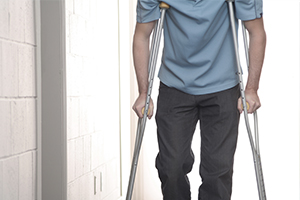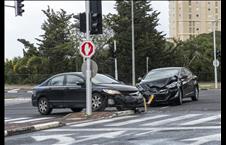If you have been in a car accident, there are potential injuries you might feel right away, such as bone and skull fractures, bruises, and torn ligaments. But there are also many common car accident injuries that people often don’t feel right away.
Not All Symptoms Occur Immediately

Some injuries, especially those to soft tissue, may actually not be felt for a long period of time after an accident — even for several weeks.
The fact that you don’t feel the injuries, though, doesn’t mean they are minor. Some can affect you physically for the rest of your life, and impact your quality of life as well. Some can even be fatal.
Here’s a brief overview of injuries you can sustain in a car accident, but not may feel right away.
Traumatic Brain Injury and Related Injuries
Your brain can be affected seriously in even a minor accident. If you’re rear-ended, for example, it can cause you to move suddenly forward and then back. That jostles the brain. It can result in a traumatic brain injury (TBI), concussion, or other head injury. These can occur without the head looking or feeling especially hurt.
If you have hit your head or had your head severely jostled, be sure to see a physician immediately after the accident. They can check for signs of concussion.
Other symptoms of brain injuries include headaches 48 to 72 hours post accident. These can result from neck injuries, brain movement, a concussion, or bleeding or blood clots in your brain. The latter two can be fatal if not treated.
Neck or Shoulder Pain or Stiffness
You might feel fine after a car crash, but then begin to feel pain or stiffness in the neck or shoulder. This is one of the most frequent symptoms to occur in the aftermath of an accident.
These symptoms are part of whiplash. The term whiplash derives from the way a body moves when a car is rear-ended. It moves abruptly back and forth, like a whip being cracked. This type of movement can result in soft tissue damage, which your doctor will not see on an X-ray. Whiplash can result in long-term or even permanent mobility issues.
Back Pain
If you’ve injured your muscles, nerves, ligaments, or vertebrae, you can develop back pain days or weeks after the accident. Back pain is particularly frequent in rear-end or hit-from-the-side accidents.
Experienced Car Accident Lawyers in New York
Friedman, Levy, Goldfarb & Green are experienced car accident lawyers. Please call us today at (212) 307-5800 for a free consultation about your case.
Additional Resources:
- Konet, Kyle. Arrowhead Clinic. “Delayed Car Accident Injury Symptoms To Pay Attention To.” https://www.arrowheadclinic.com/category/blog/delayed-car-accident-injury-symptoms
- U.S. Centers for Disease Control and Prevention. Motor Vehicle Crash Deaths. https://www.cdc.gov/vitalsigns/motor-vehicle-safety/index.html

 School is out and temperatures are rising, bringing many people to shopping malls. Shopping centers offer a convenient opportunity to browse dozens of stores, restaurants, and attractions in one stop, but the hustle and bustle can lead to slips, falls, and other personal injuries.
School is out and temperatures are rising, bringing many people to shopping malls. Shopping centers offer a convenient opportunity to browse dozens of stores, restaurants, and attractions in one stop, but the hustle and bustle can lead to slips, falls, and other personal injuries. Because construction work is inherently dangerous, the risk of injury to workers is greater than in other industries and workplaces. However, construction workers have a right to a safe work environment. While construction injuries are usually covered under workers’ compensation laws, it may be possible to pursue a lawsuit based on negligence against site owners, contractors, subcontractors, their employees and agents for violations of applicable safety laws.
Because construction work is inherently dangerous, the risk of injury to workers is greater than in other industries and workplaces. However, construction workers have a right to a safe work environment. While construction injuries are usually covered under workers’ compensation laws, it may be possible to pursue a lawsuit based on negligence against site owners, contractors, subcontractors, their employees and agents for violations of applicable safety laws. Many individuals mistakenly believe that they cannot sue city hall, but this is not the case. Under the doctrine of sovereign immunity, town, city, county and state governments were once protected from most lawsuits. Today, those rules have been scaled back to some extent, and the government can be held responsible for personal injuries and property damage or unlawful conduct. Let’s take a look at personal injury and other lawsuits that can be brought against government entities.
Many individuals mistakenly believe that they cannot sue city hall, but this is not the case. Under the doctrine of sovereign immunity, town, city, county and state governments were once protected from most lawsuits. Today, those rules have been scaled back to some extent, and the government can be held responsible for personal injuries and property damage or unlawful conduct. Let’s take a look at personal injury and other lawsuits that can be brought against government entities. Most of the items we use on a daily basis are manufactured by a business operating somewhere in the world. Think about it: the vacuum cleaner, water heater, cell phone, the things we take for granted every day. What if the water heater malfunctioned and you were burned or the vacuum cleaner exploded while you were using it. If these accidents were due to a
Most of the items we use on a daily basis are manufactured by a business operating somewhere in the world. Think about it: the vacuum cleaner, water heater, cell phone, the things we take for granted every day. What if the water heater malfunctioned and you were burned or the vacuum cleaner exploded while you were using it. If these accidents were due to a 
 When the courts are asked to determine liability in a personal injury case involving a traffic accident, one of the first things a jury is asked to consider is who is at fault for the accident. There are several factors that are taken into consideration when making that determination.
When the courts are asked to determine liability in a personal injury case involving a traffic accident, one of the first things a jury is asked to consider is who is at fault for the accident. There are several factors that are taken into consideration when making that determination. When you are injured in an accident due to the negligent, reckless or willful conduct of another, you may be entitled to receive a settlement. Often times, these settlements are paid out by insurance companies. Unfortunately, if you are a Medicare beneficiary, you may have to forfeit some or all of the settlement you receive.
When you are injured in an accident due to the negligent, reckless or willful conduct of another, you may be entitled to receive a settlement. Often times, these settlements are paid out by insurance companies. Unfortunately, if you are a Medicare beneficiary, you may have to forfeit some or all of the settlement you receive.





